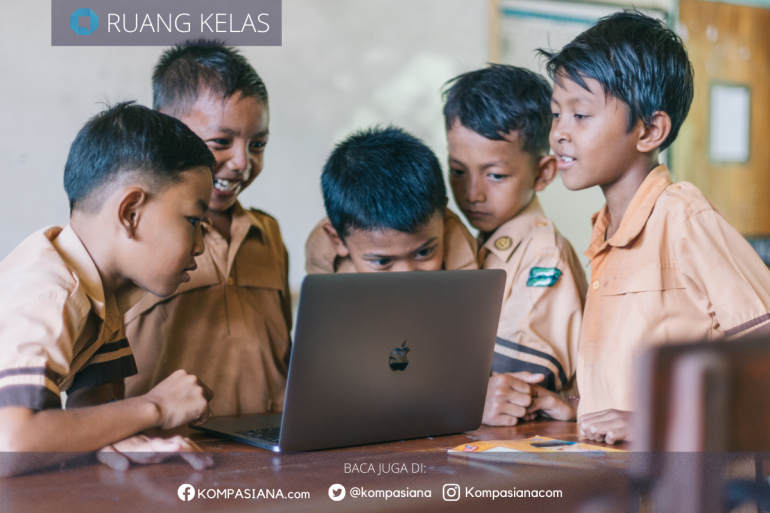Rasio (Intelligent Quotient) is some sort of measurement of human’s intelligence. To be more specific Intelligent Quotient is the human’s ability to understand, think critically, reasoning, and thinking logically. Rasa (Emotional Intelligence) can be defined as a human's ability to properly manage and understand their emotions. Raga can be defined as a condition when humans have a good physical condition to live daily life without any physical obstacles.
When it comes to creating a student to have the confidence, intelligence, and strength to choose their own major in university, having a balance between Rasio, Rasa, and Raga is very important. However, there are several steps that should be taken in order to achieve these objectives. This can be achieved by implementing a good logic model with the goal of creating a balanced Rasio, Rasa, and Raga of a student, so that they can choose the university major that is suitable for them. The logic model is a tool that allows the government and other stakeholders to build a master plan with enough information to focus on the end goal.
Logic models are a type of visual representation of an idea. They provide a means of describing and sharing an understanding of the linkages (or connections) between the many pieces required to run a program or change attempt. A bounded project or initiative is described by logic models, which include both what is intended (the doing) and the expected outcomes (the getting). They lay out a clear path to a specific goal. The modeling process (or the process of developing models) allows you to assess the strength of the link between activities and outcomes. Models can reflect participants' learning about what works under what situations through the process of critical evaluation and development.
In the planning process, planners usually set some sort of specific objectives or in a longer run it can be stated as the ultimate goal of the plan. The next step that the planner should do is create the timeline or time frame of their plan. It could be short-term (up to 1 year), Medium-term (5-10 years) and long-term (>10 years). This is because, in most cases, an impact is formed over time as a result of a collection of accomplishments divided into time segments. These goals can be divided into two categories: project objectives and project benefits.
Output that should be produced is the next step that the planner should be thinking about after determining the objectives. The tangible and intangible results that come from a process or series of activities are known as outputs. Meanwhile, activities are the methods by which planners put their 'input,' or resources, to use. In the Theory of Logic Model, the components of what are called 'Do' or strategies are inputs, processes, and outputs (Knowlton & Phillips, 2013).
Planners, investors, managers, and program evaluators employ logic models to design, discuss, implement, and evaluate programs. It's been employed all around the world, particularly in government organizations and the public sector. On a national scale, the Minister of Finance of the Republic of Indonesia has pushed the Minister of Finance Regulation (PMK) Number 143 of 2015 concerning Guidelines for the Compilation and Study of Work Plans and Budgets of State Ministries, which uses the logic model as a standard tool for setting up work plans in state budgeting since 2015.
Wrong Major Problem
Every 3rd grade high school student in Indonesia usually felt some sort of confusion or anxiety to choose what major that they want in the university. Choosing the university to go to is relatively easier because there are a lot of options available both in public and private universities. However, choosing the major, based on the writer's experience, is more difficult because a lot of students in Indonesia do not really know about what they are interested in and what they are capable of. No wonder that almost 87% of the students in Indonesia choose the wrong major in university.
The problem of choosing the wrong major usually occurs during high school. It happens because mostly both schools and students tend to be more focused on what university the student will go to. It can be seen on the SNMPTN system, a lot of schools will guide their students to choose the university with higher probability to be accepted and choose the major with less competition. From this system we can see that the high school priority is for their student to be accepted in the university, without actually paying attention to what the student is interested in and capable of.
As mentioned in the introduction, there are four factors that contribute to the problem of choosing the wrong major. According to an article by goodside.id, there are two more factors that contribute to the problem of choosing the wrong major. First, choosing a major based on the passing grade, this is exactly what happened in SNMPTN system or possibly SBMPTN system as well. Second, students think too much about the work prospects of the major. This can happen to students who already know their talent and what they are interested in. But, once they found information about the major that they felt suitable does not have a good work prospect in the future, some of the students decided to make a turn and choose a major with a good work prospect.







